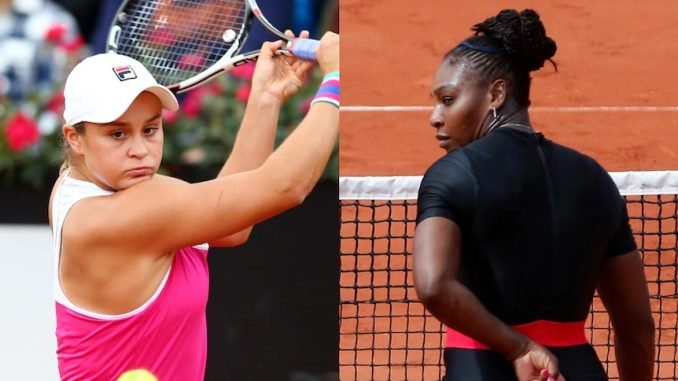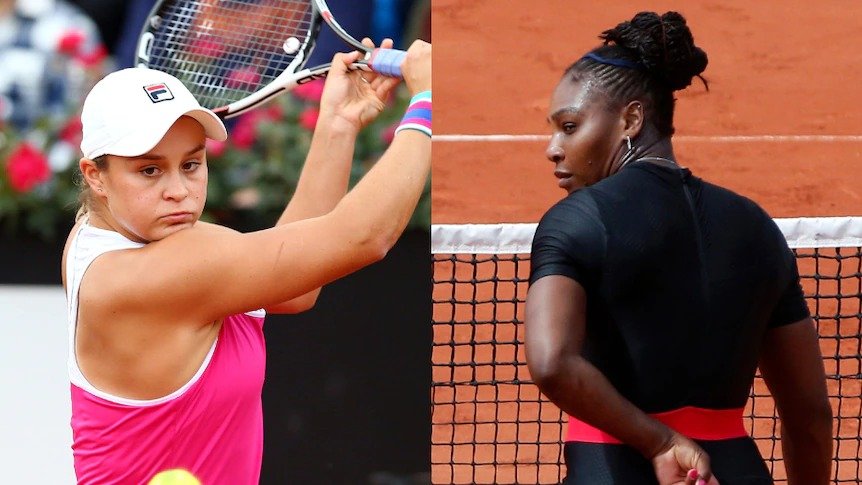
Ashleigh Barty’s Return to Wimbledon: Coming Out of Retirement

**1. Background on Ashleigh Barty:**
– **Early Career:** Ashleigh Barty began her professional tennis career at a young age, quickly establishing herself as a talented player. Her versatility, athleticism, and tactical intelligence set her apart from her peers.
– **Grand Slam Success:** Barty achieved significant success in her career, winning multiple Grand Slam titles. Notably, she won the French Open in 2019 and Wimbledon in 2021, solidifying her status as one of the top players in the world.
**2. Retirement Announcement:**
– **Surprising Decision:** In March 2022, Barty shocked the tennis world by announcing her retirement at the age of 25. Despite being at the peak of her career, she cited a desire to pursue other interests and a need for personal fulfillment outside of tennis.
– **Impact on Tennis:** Her retirement left a void in women’s tennis, as Barty was not only a top player but also a respected and admired figure in the sport. Her decision highlighted the intense pressures and demands of professional tennis.
**3. Reasons for Returning:**
– **Renewed Passion:** After spending time away from the sport, Barty may have rediscovered her passion for tennis. The break could have provided her with a fresh perspective and renewed motivation to compete.
– **Unfinished Business:** Barty might feel that she has unfinished business in the sport, with more goals to achieve and records to break. Returning to Wimbledon, a tournament where she has previously triumphed, symbolizes a quest for further glory.
– **Personal Growth:** Time away from tennis allowed Barty to grow personally and explore other interests. This growth could contribute to her mental and emotional resilience, better preparing her for a return to the professional circuit.
**4. Preparations for Return:**
– **Training and Fitness:** Returning to competitive tennis after retirement requires rigorous physical preparation. Barty likely underwent an intensive training regimen to regain her fitness and competitive edge.
– **Mental Readiness:** The mental aspect of returning to professional sports is crucial. Barty’s preparation would have included strategies to handle the pressures and expectations associated with her comeback.
**5. Challenges of Returning:**
– **Competition Level:** The level of competition in women’s tennis remains high, with new talents emerging and established players continuing to perform well. Barty will need to quickly adapt to the competitive environment.
– **Physical Demands:** The physical demands of professional tennis are significant. Barty will need to ensure her body can handle the rigors of regular match play and the toll it takes on physical health.
– **Expectations and Pressure:** There will be considerable expectations and pressure on Barty to perform at a high level immediately. Managing these expectations will be crucial for her mental well-being and performance.
**6. Potential Impact on Women’s Tennis:**
– **Increased Interest:** Barty’s return is likely to generate significant interest in women’s tennis, drawing attention from fans, media, and sponsors. Her comeback can boost viewership and engagement in the sport.
– **Competitive Dynamics:** Barty’s presence will add depth to the competitive field. Her matches against top players will be highly anticipated and could influence the dynamics at the top of the women’s game.
– **Role Model:** Barty’s journey, including her retirement and return, continues to make her a role model for young athletes. Her ability to balance professional success with personal fulfillment is an inspiring narrative.
**7. Historical Context:**
– **Previous Comebacks:** Tennis history includes notable comebacks, such as those by Kim Clijsters and Justine Henin. Barty’s return will be compared to these successful comebacks, adding to the intrigue of her journey.
– **Legacy Building:** Barty has the opportunity to further cement her legacy in the sport. Success in her comeback could enhance her status as one of the greats of women’s tennis.
**8. Reception from Peers and Fans:**
– **Warm Welcome:** Barty is likely to receive a warm welcome from her peers and fans. Her sportsmanship, humility, and positive demeanor have earned her respect and admiration within the tennis community.
– **Support and Encouragement:** Fellow players and fans will support and encourage Barty in her return. The tennis community often rallies behind athletes making comebacks, appreciating the challenges involved.
**9. Strategic Approach:**
– **Selective Tournaments:** Barty might adopt a strategic approach to her comeback, selectively choosing tournaments to manage her physical and mental workload. This could include prioritizing Grand Slams and key events.
– **Adaptation and Adjustment:** Barty will need to adapt to changes in the game and adjust her strategies accordingly. This might involve refining her game plan and incorporating new techniques.
**10. Long-Term Vision:**
– **Future Goals:** Barty’s return is likely driven by specific goals she wishes to achieve. These could include winning more Grand Slam titles, achieving career milestones, and enjoying the process of competing at the highest level.
– **Contribution to the Sport:** Beyond personal achievements, Barty’s return can contribute positively to the sport. Her presence and performance can inspire future generations of tennis players.
### Conclusion
Ashleigh Barty’s decision to come out of retirement and return to Wimbledon is a momentous event in the world of tennis. Her comeback is fueled by renewed passion, personal growth, and a desire to achieve more in the sport.
While the challenges are significant, Barty’s resilience, skill, and strategic approach position her well for a successful return. Her journey will not only captivate tennis fans but also inspire athletes across sports, demonstrating the power of perseverance, passion, and the pursuit of one’s true calling.
Leave a Reply